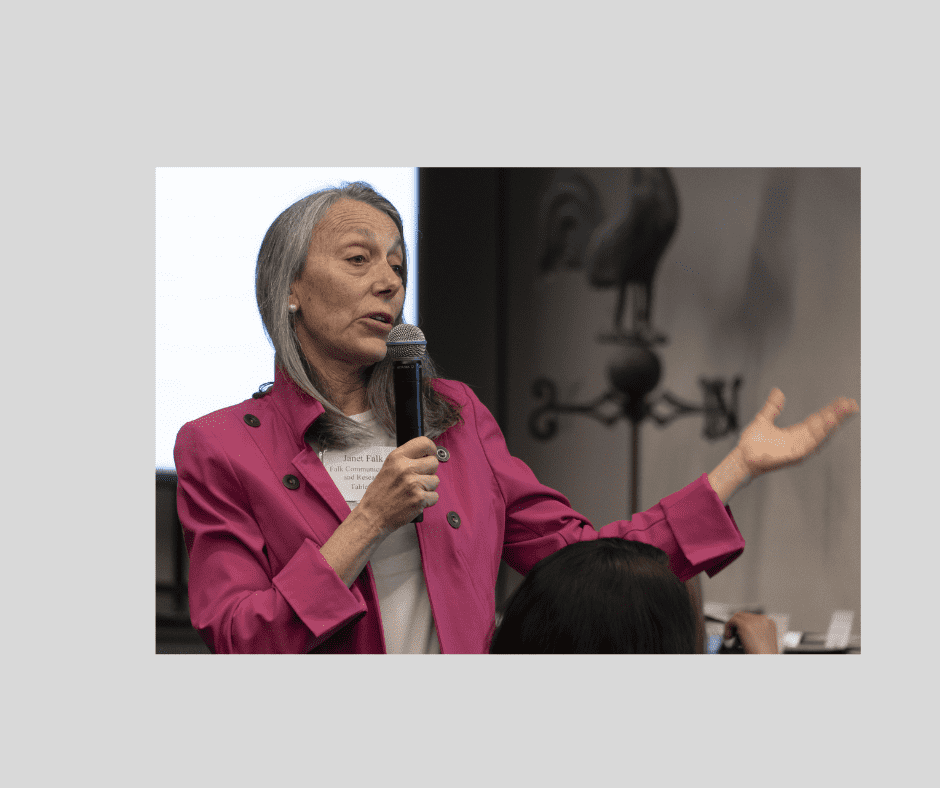
There’s always something to say.
This compliment from colleague and thought leadership writer Wayne Pollock prompted me to think: Where do I find inspiration?
Pollock wrote me: “You never cease to amaze me with your creativity when it comes to topics for articles and podcasts.”
When the blank page intimidates you, look for inspiration in your recent experiences.
Follow these 10 suggestions for a fresh idea. Here are the back stories and the resulting newsletters from the more than 150 issues I have published since January 2013:
- Absence of information
To prepare for my first podcast appearance in 2018, I looked online for tips. Sadly, most of the information was for hosts, not guests. I applied the skills of preparing for a media interview to this new setting. I’ve now appeared on nearly 50 podcasts, which makes this advice golden.
It’s Showtime! Seven Tips for a Podcast Guest - Apply a best practice from an authority
Take note of what a leader in the field does and put it into play. I corresponded about the frequency of newsletter publication with Ann Handley, a digital marketing and content expert and Wall Street Journal best-selling author. The issue was how to acknowledge, if at all, a lapse in issues.
As for tracking your online presence, I gave step-by-step instructions on setting alerts on Google and Talkwalker. Then I asked Shannon Wilkinson, an expert witness on reputation management, how often professionals should conduct an online search for their name and company. Her answer: weekly.
Mind the Gap (of Your Newsletter’s Publication)
Have You Googled Yourself Lately? -
Avoid common mistakes
Everyone makes mistakes. Share best practices to save readers embarrassment, time and money in marketing activities and events.There were THREE networking and marketing events that I might have attended on September 19, 2018. That was also Yom Kippur, the holiest day of the Jewish year. Oops. Event organizers should review the calendar for major religious holidays and high-visibility televised events (Olympics, Oscars) when selecting dates, in order to secure a robust attendance.
FIVE Email Marketing Mistakes to Avoid
Check the Calendar Before Scheduling an Event - Conversation with a colleague
You take notes in meetings with clients, naturally. What about the casual conversations with your contacts? Get a second opinion about your latest insight.
If you taught, explained or explored a thought in a discussion with one person, chances are others need to hear it as well.
Take Your Idea for a Test Drive
When Should You Issue a Press Release? - Correct a poor practice
Perhaps you cringe when you read something in print or online. How did the writer not catch that glaring error? When I know the author, I often send an email with the correct spelling, grammar usage or layout. If we are not acquainted, I ask if they are open to feedback. Upon confirmation, I send my advice. Invariably, the person is appreciative. Help others avoid a similar misstep.
Is Your Client List Scannable?
Can Readers Scan Your List of Services Page?
How to Invite People and Get a Sell-Out Crowd at Your Next Event - Excerpt from a presentation, webinar or podcast
Deploy a content multiplication approach. Use a different platform to share your ideas with other contacts who did not attend the program or listen to the episode.
What’s Up with Your Elevator Pitch?
Four Ways to Find a Reporter’s Email Address - Giveaway
Create and distribute a checklist, tipsheet, quiz, e-book or list of Do’s and Don’t’s. This information-rich giveaway, with your branding, may be downloaded and subsequently shared with a supervisor, employee, client, family member or other contact in the person’s circle. Decide if you require an email address or not for future follow-up.
Five Tips to Maximize a Media Interview
My Anniversary. Your Gift. - Highlights and takeaways of a speaker’s remarks
In-person events were rarely recorded prior to March 2020. Today, some hybrid and online events may be recorded, but may not be accessible to non-members or non-registrants. When permitted, distribute what you learned from the program to others in your circles, via a newsletter or a LinkedIn post.
Your Annual Report is Not Dead
Key Takeaways from the DEI Presentation at Women Owned Law - Look at the calendar
There’s a national holiday almost every month. If there’s nothing relevant in sight, check the National Day Calendar; for example, January 27 is National Chocolate Cake Day.
During the December holiday season in 2020, I encouraged sending e-cards and making donations to nonprofit organizations impacted by the COVID pandemic in lieu of ordering and mailing printed greeting cards.
Vote. Vote for Email and Not for Social Media
Turn Your Holiday Card into a Gift - Raise the bar on a practice taken for granted
Keep the reader and the listener in mind in all your communications. Find a way that you can be memorable, while professionally conveying your services.
Your Business Card is Your Paper Partner
Improve Your Voicemail Greeting
BONUS: Promote an upcoming event, presentation or podcast: Fill the room by alerting your contacts of your speaking engagement, whether in-person, virtual or hybrid.
Lunch Hour Legal Marketing Podcast
Two FREE Events: W 5/15 Arbitration and Th 5/16 Business Development, Baseball and Ethics
This Month’s Tip
Are you still looking for inspiration? Team up with a co-author, someone who has their finger on the pulse of what’s keeping industry executives up at night. Brainstorm a topic with a client or colleague and then take the lead in writing it up.
Alternatively, pose a question or three to your contacts. Gather the prettiest pearls of their wisdom and string them together in a beautiful necklace of insights. That’s how I wrote 20 columns for The New York Law Journal and The New Jersey Law Journal.
Team Up for a Win-Win
Are You Too Busy to Write? Crowdsource Your Content
Contact
Has your well of ideas run dry? Contact me at Janet@JanetLFalk.com, make an appointment here or call me at 212.677.5770. Together, we’ll primethe pump for fresh inspiration and content.
Click here to read prior issues of this newsletter.
Click here to subscribe to this monthly newsletter and make sure you don’t miss the next issue.






















































 Make sure your card will re-start the conversation after your recent meeting
Make sure your card will re-start the conversation after your recent meeting Tips to maximize your presence and activity at a large group meeting.
Tips to maximize your presence and activity at a large group meeting. Ask contacts to provide insights and string those pearls of wisdom together.
Ask contacts to provide insights and string those pearls of wisdom together. Embrace every opportunity to promote your insights.
Embrace every opportunity to promote your insights. Why and how to share this social proof
Why and how to share this social proof Entice them with a value-added experience.
Entice them with a value-added experience. 
 When you give a talk, plan in advance how to promote it before and afterwards
When you give a talk, plan in advance how to promote it before and afterwards How? Subscribe, Share, Co-author, Ask and Introduce.
How? Subscribe, Share, Co-author, Ask and Introduce. A giveaway delivers contact information to potential clients.
A giveaway delivers contact information to potential clients. Collaboration yields up-to-the-minute content and conversation.
Collaboration yields up-to-the-minute content and conversation. Seven lessons for guests on a podcast interview.
Seven lessons for guests on a podcast interview. Maximize participation by paying attention to holidays.
Maximize participation by paying attention to holidays. Be deliberate, not random, with contacts in your network.
Be deliberate, not random, with contacts in your network. Look beyond your target market.
Look beyond your target market. Check your progress at mid-year.
Check your progress at mid-year. When you comment on posts on LinkedIn and Twitter, indicate how others may benefit from the discussion.
When you comment on posts on LinkedIn and Twitter, indicate how others may benefit from the discussion.


 It is re-formatted.
It is re-formatted. Raise the flag wherever you can.
Raise the flag wherever you can. Ask questions that allow respondents to brag.
Ask questions that allow respondents to brag. Implement a new approach.
Implement a new approach.